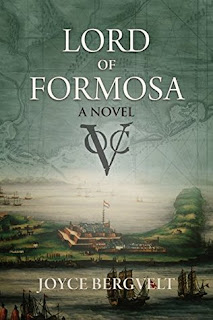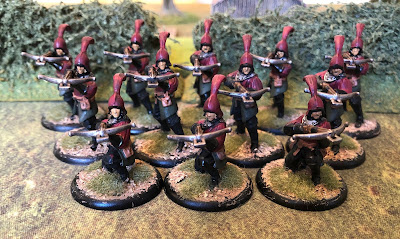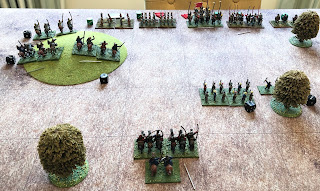The latest Osprey publication in the Campaign series covers the less well known Arab siege of Constantinople in AD 717-18, written by Si Sheppard. As an aside, I would like to pay credit to Osprey for their weekly free e-books and the Frostgrave promotion, all of which are helping folk get through the current lockdown. Other military publishers have also offered a range of discounted publications. Thanks, and well done!
This book follows the usual Campaign format. A lengthy chapter on the background to the siege including the previous attempt by the Avars to capture the city in AD 626. Constantinople is built in a strong defensive position, and the fortifications reinforce those strengths.
The Arab Jihad burst into the Middle East in AD 626, defeating the Sasanians and the Byzantines, before capturing the great cities of the region. They advanced along the North African coast and captured Carthage. Initially reluctant to create naval forces, later Arab commanders recognised the necessity and attacked the major islands including Cyprus.
By 651, with the Sasanians dealt with, the Arab commander Muawiya prepared for a major campaign against the Byzantines in Anatolia, supported by a massive fleet. As you would expect in this series, this is graphically explained with excellent maps. However, a major storm wrecked much of the Arab fleet as it approached the Dardanelles, and the Arabs withdrew to Syria.
A Muslim civil war gave the Byzantines another break before major raids started again. The Byzantines responded with attacks of their own but were put under pressure in the Balkans when the Slavs laid siege to Thessaloniki in 676. An alliance with the Mardaites from near Antioch helped push the Arabs into a 30-year truce, to enable the Umayyad dynasty to consolidate its power. Not without another round of internal conflict.
By the turn of the century, the Arabs were back conducting annual raids into Anatolia. Meanwhile, the Byzantines engaged in further internal conflict. They did achieve an end to the conflict with the Bulgars which brought peace to the Balkans and time to strengthen the defences of Constantinople for the siege.
The next chapter covers the opposing commanders. Leo III for the Byzantines, who had had an extraordinary progress to power. In 12 years, he rose from being a Syrian peasant refugee to the purple. For the Arabs, Maslama b. ‘Abd al-Malik was the son of the Umayyad caliph. He was an experienced commander with many successes, although he failed at Constantinople largely due to poor planning. In particular, dealing with the Bulgars and countering the destructive effect of Greek fire. He also appears to have believed that Leo would betray the city.
We then get an outline of the opposing forces and their plans. The achievements of the Arabs have been understated in western history, despite their immense and long-lasting conquests. The Islamic faith had bound together the warring tribes and created professional armies maintained by the state. They understood the importance of logistics, although they would normally avoid sieges, preferring to fight in the open.
The Byzantines of this period haven’t had a much better press than the Arabs. By the siege they had lost many of the richest provinces, weakening the field armies. The Thematic system was designed to shield the borders until the field armies arrived. They also had a system of garrison stations and fortified outposts. In Constantinople, these garrisons consisted of a wide variety of professional and militia units. The naval superweapon was Greek Fire, which like napalm clung to everything it burned and could not be doused by water. Colour plates by Graham Turner illustrate how this worked in some detail.
The siege began with the Arabs cutting off the city by digging a trench around the walls and counter defences against the Bulgar threat from the rear. The city’s weakness was an attack from the sea, but Arab fleets were defeated by Greek fire.
The winter weather and poor provisions, much of which was lost to a Byzantine ploy, took their toll on the Arab army. Relief fleets suffered from mass desertion of their largely Christian crews, and the blockade was lifted. This meant the Arabs became the besieged and the Caliph ordered Maslama to abandon the siege. The army was heavily defeated by the Bulgars and the survivors harassed by the Byzantines as they withdrew through Anatolia.
 |
| Bulgars attacking Arab units - 15mm figures |
The aftermath of the siege brought a Byzantine recovery, but this was squandered by internal revolts and the Arab cause recovered. However, after several defeats, the Umayyads were replaced by the Abbasid dynasty.
As Maslama cast one last glance at the walls of Constantinople on 15 August 718, he may have had a Hadith, ascribed to Muhammad by ‘Abd Allāh b. Muhayrīz, in mind: ‘Persia is [only a matter of] one or two thrusts and no Persia will ever be after that,’ the Prophet foretold. But the heirs of Rome ‘are people of sea and rock; whenever a generation passes, another replaces it. Alas, they are your associates to the end of time.’
The book ends with some interesting what-ifs. It will irritate some historians, but enjoyed by others. Overall, an excellent study of the siege and its context.





















































